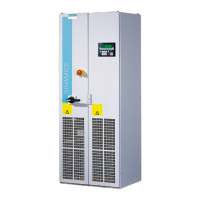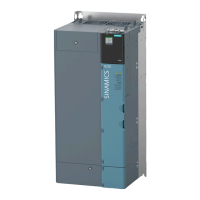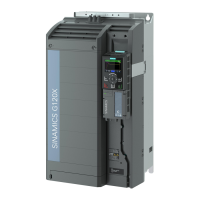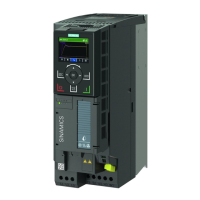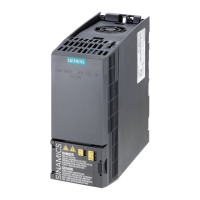Mains connection and line-side power components
3.2 Information on the disconnector unit
SINAMICS S110
36 Manual, 07/2015, 6SL3097-4AC10-0BP5
Information on the disconnector unit
A disconnector unit is required for disconnecting the drive line-up from the supply system
correctly. For this, you can use the disconnector unit of the electrical equipment of the
machine. The disconnector unit must be selected in compliance with the requirements of the
internationally binding standard relating to the electrical equipment of machines IEC 60204-
1, Section 5.3. The relevant technical data and any other loads connected to the electrical
equipment must be taken into account when making your selection.
The accessories required for the line disconnector must be selected from the manufacturer
catalogs. You will find detailed information in catalogs PM21 and NC61.
Damage to the drive electronics when switching the line disconnection equipment under
load
When switching the line disconnection equipment (type according to the recommended
selection) under load, then the contacts will be subject to premature wear. This can cause
the line disconnection equipment to malfunction, with subsequent damage to the drive
electronics.
• Use a leading auxiliary break contactor and/or use a Voltage Sensing Module (VSM10).
• If this is not possible, then avoid switching the line disconnection equipment under load.
Overcurrent protection by means of line fuses and circuit breakers
You must use line fuses or circuit-breakers for cable protection/overcurrent protection. NH,
D, and DO type fuses with a gG or gS characteristic or suitable circuit-breakers according to
IEC 60947 can be used for this purpose.
Danger to life due to electric shock and fire hazard caused by overcurrent protective
equipment tripping too late
Overcurrent protective equipment that trips too late or not all can cause electric shock or
fire with heavy smoke. Persons in the danger zone can suffer serious injury or death.
• Makes sure that the short-circuit power and loop impedance at the infeed point meet the
requirements stated in the documentation so that the installed overcurrent protection
equipment trips in time.
• In TT systems, besides suitable overcurrent protection equipment, also use residual
current devices (RCD) and, as of an infeed power of 55 kW or in extensive installations,
also use residual current monitors (RCM).

